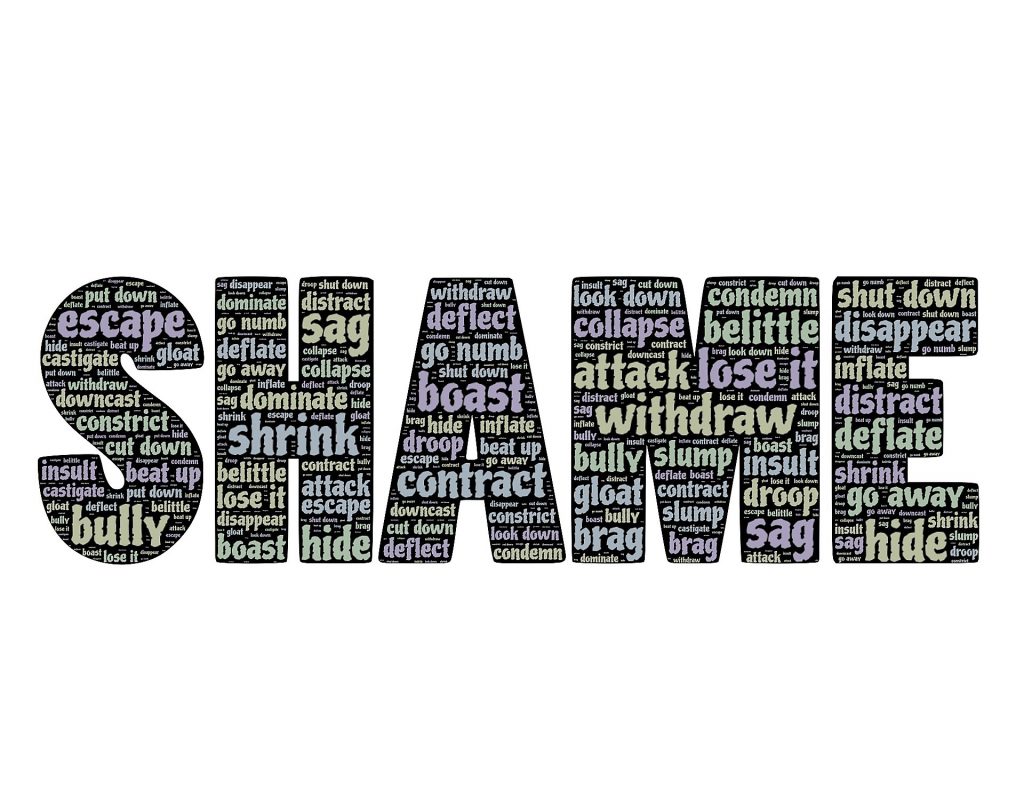“I’m telling you this is bad. What’s happening is very destructive!” The deeper tone, the more guttural expression of my words must have conveyed the intensity reeling through my being.
“Come on. Don’t be so negative. People aren’t that stupid.” My friend’s casual shrug triggered a sense of urgency in my belly. He just wasn’t hearing what I was saying, or what I thought I was saying at the very least.
“I’m not saying people are stupid. I’m saying people can be easily manipulated, and I see it happening every day.” I tried rationalizing my comments, tried to pull back on emotionally laden bodily expressions though that’s rather difficult considering our body language speaks volumes to our words and constantly carries the brunt of the message.
“This is nothing new.” He popped a piece of his French Toast into his mouth as nonchalant as if all the world were peaceful and sane.
“It is though. The manipulations are the same, but the ability to reach so many smack in the middle of their social living rooms.” I shook my head. I felt frustration rise.
“Listen, you’re worrying week in and out for nothing. Trump will never win the White House.” My friend’s smug disposition simply fueled my fire, and reminded me of the importance of keeping my attention on teaching shame resolution to professionals around the world.
I had many similar interactions with friends and colleagues during the presidential campaign process. I watched the manipulative tactics of Donald Trump and his campaign day -after-day over the past year. Droves of people believed a Trump presidency was a joke and laughed off my nightmarish concerns. Well, as anyone reading this knows, it’s here. Trump is the US President-Elected. But how could I have seen it when no one else did?
The answer is:
Trump and his crew played the shame game like pros. Did Trump read this blog in January when I wrote about how shame once triggered seeks to project? Am I responsible for this disaster? Well, that’s guilt, not shame exactly, and I’m not going there.
Back in January. I wrote about Projections. In fact, this is what I wrote:
We all know to be human is to project; yet, the projections related to shame, blame and guilt can be some of the most destructive and wounding to the self and relationships. The reason shame-based projections can be so toxic is because they diminish at the core how we feel about ourselves or other people.
When we are on the receiving end of projected shame, blame or guilt we often feel forced into the position of accepting or rejecting it. Accepting the projected shame is very disempowering.
Trump somehow knew this. He blamed and shamed as many democratic leaning demographic groups as he could: women, Latinos, Muslims, handicap people, you name it.
This forced these folks into a reaction, a choice:
See, when we are on the receiving end of projected shame, blame or guilt, it can cause us to feel so demoralized that we don’t want to accept it. We want to project this shame or blame OUT to almost anywhere we aren’t. For a democrat that could be back at Trump, aka ‘the shamer’, but for those folks who didn’t have a lot of shame resilience because historically they were made to accept the shame of ‘the shamer’ through abuse, trauma, chronic shaming, then they would side with ‘the shamer’, Trump in this instance, and blame the democratic party, or Hillary Clinton or her husband, etc. (as Trump encouraged).
Going back to how it works, when projected shame lands with another, there is a neurobiological experience of initial relief! Especially when the stakes feel high. Projection serves the important function of a pressure relief valve. Think about it. Can you remember a time when you felt relieved when it was discovered “the problem” was not your fault but someone else’s?
Just think back to a time, particularly when the outcome mattered, and see if you can identify the feeling in your body when shame or blame landed. When we feel cornered by shame or blame, whether it is imaginary or not, there is a natural impulse to throw the shame or blame or guilt off so it is not just spinning in space somewhere. That does not help us. We need to
identify where and with whom the blame or shame lands— this can feel like an enormous successful escape from the shame/blame attack.
I think that Trump was betting if he manipulated this basic mammalian wiring, he could draw 10{f4ab6da3d8e6a1663eb812c4a6ddbdbf8dd0d0aad2c33f2e7a181fd91007046e} of the democrats who voted for Obama in the last elections (those with less shame resilience) while he made sure he got the vote out through his rural, white, uneducated base of supporters (whose amygdala, aka our fear center, he manipulated daily). In a highly-polarized electorate that was all he needed to win the numbers game of the electoral college, and hence, the election. And that’s exactly what happened: a clear percentage of women, Latinos, African-Americans and gays who voted for Obama in both past elections switched and voted for Trump.
How do we apply any of this constructively in our work with client’s and their shame and blame? If a client is shaming, blaming or guilt-tripping you, and you have earnestly offered a remedy or repair to the situation without any shift, try something empowering for both of you.
Let them know you would like to experiment with the idea that for the next two minutes you accept the shame, blame or guilt of whatever it is they are proposing. 
Allow yourself to accept this as you would a heavy burden that is not yours, but one that you are willing to hold onto for someone else so that person can gather enough momentum to lift themselves out of a ditch. Ask your client if they can feel you taking it on and holding it in the moment. Ask what difference it makes for them?
Nine times out of 10 it will provide the person with enormous relief. This can show up in the form of tears of joy, sighs of relief, easier breathing or greater facial relaxation. After a couple of minutes of relief, ask them how they feel about you and the situation. Again, the majority of people feel gratitude for the experience and often view the situation very differently than they did before.
Who knows, maybe if Clinton and the Democratic party had met the electorate’s shame and blame outright, had given them the experience that their suffering truly landed with them, it might have brought greater empowerment to those who felt so demoralized, maybe that 10{f4ab6da3d8e6a1663eb812c4a6ddbdbf8dd0d0aad2c33f2e7a181fd91007046e} would have been 5{f4ab6da3d8e6a1663eb812c4a6ddbdbf8dd0d0aad2c33f2e7a181fd91007046e} or even less, and their lives, and all of ours would be different now.
Questions or comments contact Caryn at: caryn@re-embodylife.com or go to: www.re-embodylife.com
 Caryn Scotto d’ Luzia, MA, SEP, is an innovative developer of holistically-based models for therapeutic professionals. As a somatic facilitator, she transforms educators and trainers professional around the world in paradigm-shifting, life-affirming approaches to human development and growth. Author of Alchemy of Shame Transformation for Therapists and Healing Professionals, Caryn is the developer of what is fast becoming the gold standard approach to shame resolution: AST Model of Holistic Shame Resolution®. This neuro-biologically-principled, neuro-relational approach specializes in chronic shame relief and resilience, shame-based early trauma, shame-based relational re-patterning, and life-affirming authentic self-expression and empowerment. Caryn is a post advanced program instructor at the Somatic Experiencing Trauma Institute, a member of the UN NGO Committee on Mental Health, a USABP Presenter, and a speaker at the United Nations on the issue of resolving shame in women and girls around the world. Caryn’s monthly blog published by Somatic Psychotherapy Today, Inside Shame Transformation offers highly sought tips and case studies to professionals for applying the AST Model’s breakthrough shame resolving principles. In addition to online courses, webinars and live trainings, Caryn offers private sessions and in-person in the CA Bay Area and NYC and remotely via Skype to clients around the globe.
Caryn Scotto d’ Luzia, MA, SEP, is an innovative developer of holistically-based models for therapeutic professionals. As a somatic facilitator, she transforms educators and trainers professional around the world in paradigm-shifting, life-affirming approaches to human development and growth. Author of Alchemy of Shame Transformation for Therapists and Healing Professionals, Caryn is the developer of what is fast becoming the gold standard approach to shame resolution: AST Model of Holistic Shame Resolution®. This neuro-biologically-principled, neuro-relational approach specializes in chronic shame relief and resilience, shame-based early trauma, shame-based relational re-patterning, and life-affirming authentic self-expression and empowerment. Caryn is a post advanced program instructor at the Somatic Experiencing Trauma Institute, a member of the UN NGO Committee on Mental Health, a USABP Presenter, and a speaker at the United Nations on the issue of resolving shame in women and girls around the world. Caryn’s monthly blog published by Somatic Psychotherapy Today, Inside Shame Transformation offers highly sought tips and case studies to professionals for applying the AST Model’s breakthrough shame resolving principles. In addition to online courses, webinars and live trainings, Caryn offers private sessions and in-person in the CA Bay Area and NYC and remotely via Skype to clients around the globe.









